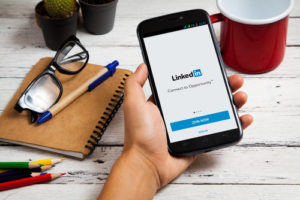It takes a lot of hard work and effort to craft the perfect resume. When you’ve finally got it just how you want it, you may be tempted to copy and paste the information into your LinkedIn profile. However, the two should be separated for a few important reasons. The substance of your profile can be similar to your resume, but you need to add a little more style and creativity. Here are some reasons why you shouldn’t treat LinkedIn the same way as your resume.
Repetitive Information is Boring
If an employer likes your resume, they might get online to check out your social media pages. A LinkedIn profile with the same exact information is boring. Employers want to find out new information you normally wouldn’t include on a formal resume. Tell a story or two about certain accomplishments you list on your resume. If you have a hard time distinguishing the two styles, you may benefit from LinkedIn profile writing services. Just think of LinkedIn as an extension of your resume rather than a copy of it. Create an interesting summary, make it personal (you can use personal pronouns such as “I”, “me” or “my” here. Make it uniquely yours.
Support Your Claims
Your resume is designed to make you look good in short statements. LinkedIn allows you to support those statements with evidence. If you’ve received an endorsement or a recommendation from a former supervisor or boss, include it on your LinkedIn profile. LinkedIn is designed to let you show your accomplishments instead of just talking about them. The more detail you go in to support your claims, the better off you’ll be.
The best place to start is listing any specific accomplishments regarding a past job. Go into detail about how you were able to accomplish something and how you helped the company grow or succeed as a result. Employers want to know how you did a task just as much as they are interested in what you did. Your LinkedIn profile is the perfect place to showcase that.
Be Conversational
Any LinkedIn profile development services will tell you to avoid resume language when creating your profile. The more conversational you are in your writing tone, the more you will relate to the person reading about your skills and expertise. If writing isn’t your strong suit, consider having a friend or a professional read over your profile before you publish it. Without sounding like you’re bragging on yourself, you need to highlight what you’ve done at past jobs and how these achievements make you a good fit for the job you’re looking for.
Developing a LinkedIn profile different from your resume may seem like a tough task. However, once you find the perfect balance between professional and casual, it won’t be difficult at all. If you need help getting started, or at any point in the process, feel free to get in touch with us.

